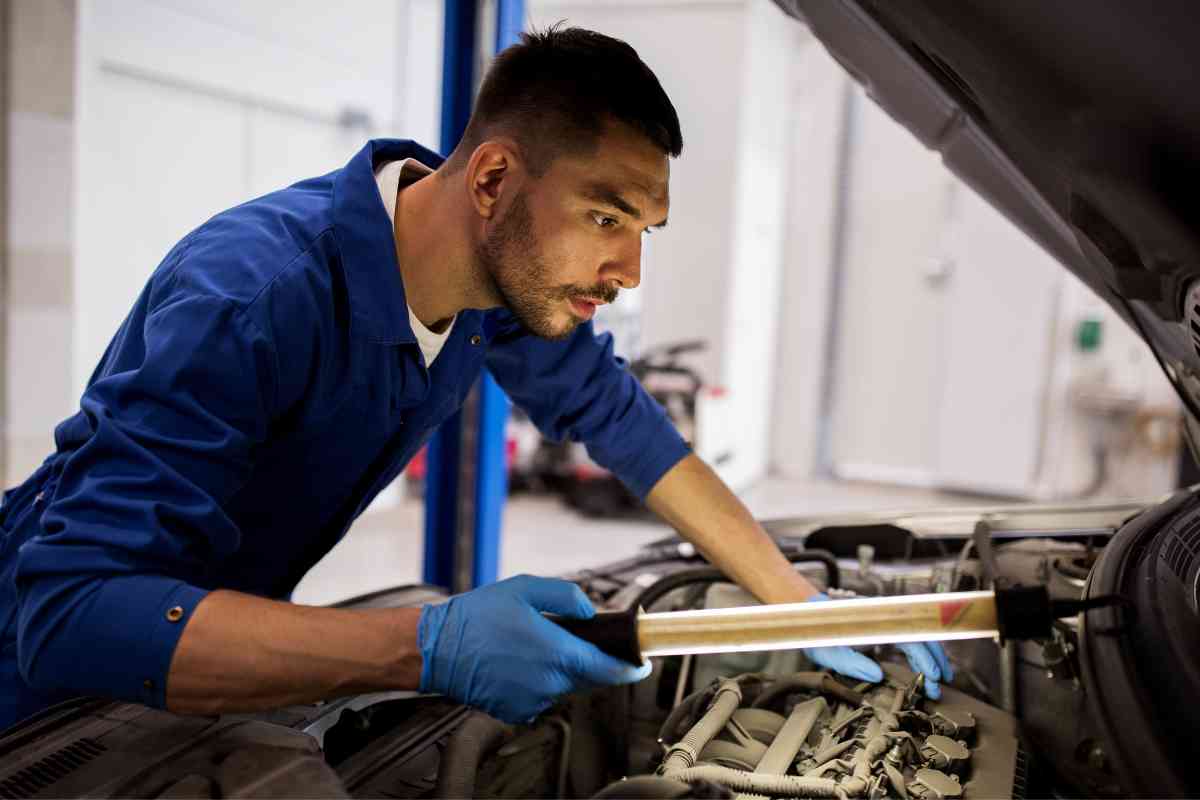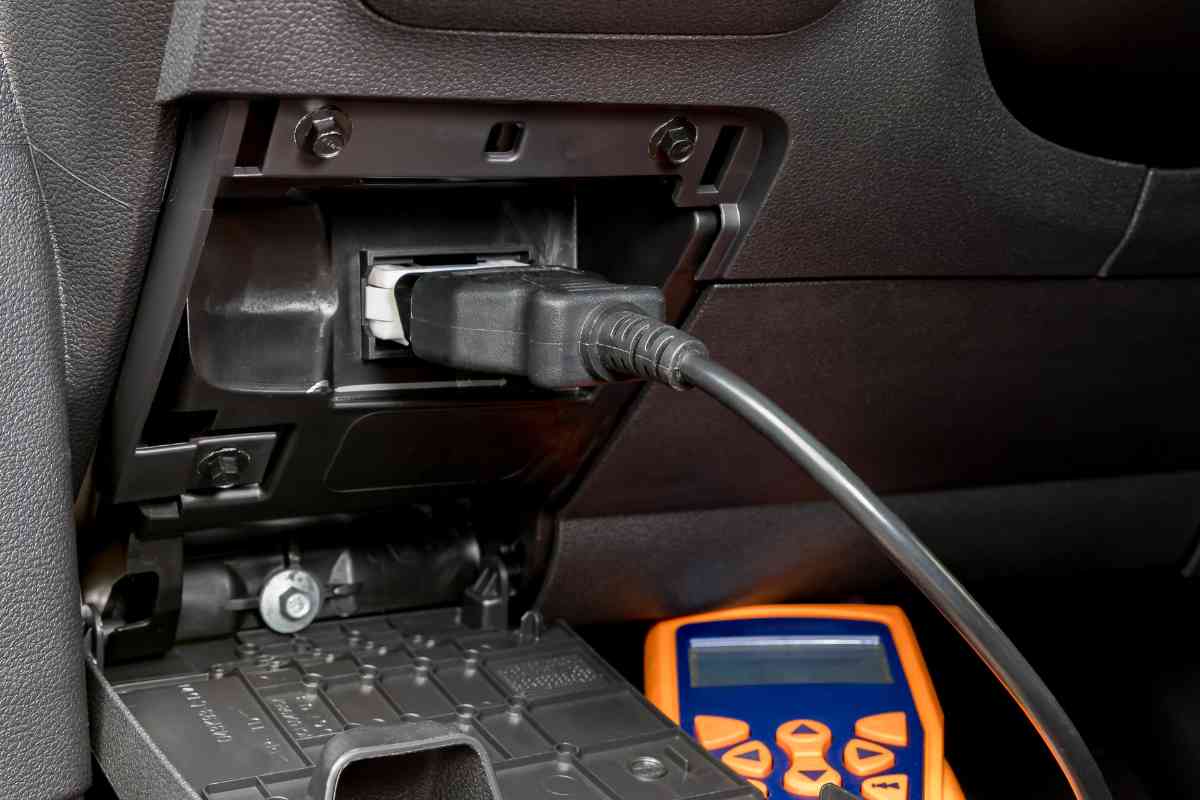Honda CRV Check Engine Light: Causes and Solutions
The check engine light on a Honda CR-V can be an intimidating sight for any driver. It’s a warning indicator that something is wrong with the engine or emissions system. There are several reasons why the check engine light may come on, and it’s important to address the issue as soon as possible to prevent further damage to the vehicle.

Why is my Honda CR-V check engine light on?
Common reasons for the check engine light to come on in a Honda CR-V include issues with the fuel system, catalytic converter, oxygen sensor, and spark plugs. It’s essential to have the vehicle diagnosed by a certified mechanic to determine the root cause of the problem.
Ignoring the check engine light can lead to more severe issues and expensive repairs down the line.
Common reasons for the check engine light to come on in a Honda CR-V include issues with the fuel system, catalytic converter, oxygen sensor, and spark plugs. It’s essential to have the vehicle diagnosed by a certified mechanic to determine the root cause of the problem. Ignoring the check engine light can lead to more severe issues and expensive repairs down the line.
If you’re experiencing a flashing check engine light, it’s critical to address the issue immediately. A flashing check engine light indicates a catalyst damaging misfire that can damage the catalytic converter and O2 sensors. In this case, it’s best to avoid driving the vehicle and have it serviced as soon as possible. Overall, it’s essential to take any check engine light seriously and have it diagnosed promptly to keep your Honda CR-V running smoothly.
What is the Check Engine Light?
The check engine light is a warning indicator that appears on the dashboard of a Honda CR-V, indicating that something is wrong with the vehicle’s engine or emissions system. The light is also known as the malfunction indicator lamp (MIL) or service engine soon (SES) light.
Honda CRV lights going haywire? We have tyons of helpful guides to get CRV drivers out of any jam, from resetting the low tire pressure light to resetting the maintenance light on your CRV, FourWheelTrends has you covered.
When the check engine light comes on, it means that the onboard diagnostic system (OBD) of the vehicle has detected a problem with one or more of its components.
The OBD system is responsible for monitoring the performance of various systems and sensors in the vehicle, such as the fuel system, catalytic converter, oxygen sensor, and spark plugs.
The check engine light can indicate a wide range of issues, from minor problems such as a loose gas cap to more serious issues such as a malfunctioning engine. It is important to take the check engine light seriously, as ignoring it can lead to further damage to the vehicle and potentially costly repairs.
If the check engine light comes on, it is recommended to take the vehicle to a certified mechanic or dealership as soon as possible to have it diagnosed and repaired. The mechanic will use a diagnostic tool to read the codes stored in the OBD system and determine the cause of the problem.
The check engine light is a warning indicator that appears on the dashboard of a Honda CR-V when there is a problem with the vehicle’s engine or emissions system. It is important to take the light seriously and have the vehicle diagnosed and repaired as soon as possible to avoid further damage and costly repairs.
Common Causes of the Check Engine Light in Honda CRVs

When the check engine light (CEL) illuminates in your Honda CRV, it can be a cause for concern. The CEL is an indicator that something is wrong with your vehicle, and it can be caused by a variety of issues. Here are some of the most common causes of the check engine light in Honda CRVs.
Sensors
One of the most common causes of the check engine light in Honda CRVs is a faulty sensor. There are many sensors in your vehicle that monitor various aspects of its performance, including the oxygen sensor, mass air flow sensor, and more.
If one of these sensors fails, it can trigger the check engine light. In some cases, the sensor may just need to be cleaned or replaced, while in other cases, it may be a more serious issue with your CRV.
Catalytic Converter
Another common cause of the check engine light in Honda CRVs is a bad catalytic converter.
The catalytic converter is responsible for reducing emissions from your vehicle, and if it fails, it can cause the CEL to illuminate. In some cases, a bad catalytic converter can also cause your vehicle to overheat or produce smoke.
Gas Cap
A loose or faulty gas cap can also cause the check engine light to turn on in your Honda CRV. The gas cap is an important part of your vehicle’s fuel system, and if it is loose or damaged, it can cause a drop in fuel pressure and trigger the CEL. Fortunately, this is an easy fix – simply tighten or replace the gas cap.
Misfire
If your Honda CRV is experiencing a misfire, it can also cause the check engine light to turn on. A misfire occurs when one or more cylinders in your engine fail to ignite properly, and it can be caused by a variety of issues, including faulty spark plugs, spark plug wires, or the ignition system.
The check engine light in your Honda CRV can be caused by a variety of issues, including faulty sensors, a bad catalytic converter, a loose gas cap, or a misfire. If you are experiencing a performance issue or the CEL is illuminated, it is important to have your vehicle diagnosed by a certified mechanic or service center. They can use a code reader or diagnostic trouble codes (DTC) to determine the issue and provide a reliable and inexpensive repair solution.

What to do When the Check Engine Light Comes On
If your Honda CR-V’s check engine light comes on, it’s important to take action quickly to prevent potential damage or costly repairs. Here are some steps to follow when the check engine light comes on:
- Check your gas cap: Sometimes, a loose or damaged gas cap can trigger the check engine light. Make sure your gas cap is tight and in good condition. If it’s loose or damaged, replace it with a new one.
- Check your dashboard gauges: Look at your dashboard gauges to see if any other warning lights are on. If you notice any other warning lights, it could indicate a more serious problem.
- Check your vehicle’s manual: Consult your vehicle’s manual to see if there are any specific instructions for dealing with a check engine light. The manual may also provide information on what the light means and what steps to take.
- Get your vehicle scanned: Take your vehicle to a mechanic or auto parts store to have it scanned for trouble codes. This will help identify the problem that’s causing the check engine light to come on.
- Address the problem: Once you know what’s causing the check engine light to come on, take steps to address the problem. This may involve replacing a faulty sensor, repairing a damaged component, or performing routine maintenance.
Remember, ignoring the check engine light can lead to more serious problems down the road. By taking action quickly, you can prevent costly repairs and keep your Honda CR-V running smoothly.
How to Reset the Check Engine Light
The check engine light is a warning that something is wrong with your Honda CRV. It can be triggered by a variety of issues, including a faulty sensor or a loose gas cap.
However, it’s important to address the issue quickly to avoid further damage to your vehicle. Fortunately, resetting the check engine light is a relatively simple process that you can do yourself.
Step-by-Step Guide

Here are the steps to reset the check engine light on your Honda CRV:
- Turn off the ignition and make sure all accessories are off.
- Locate the diagnostic port under the dashboard on the driver’s side of the car.
- Connect an OBD-II scanner to the port and turn it on.
- Follow the scanner’s instructions to clear the codes and reset the check engine light.
If you don’t have an OBD-II scanner, you can also reset the check engine light manually. Here’s how:
- Turn off the ignition and disconnect the negative battery cable.
- Wait for at least 15 minutes to allow the system to reset.
- Reconnect the battery cable and start the engine.
- If the check engine light doesn’t come back on, you’ve successfully reset it.
Tips for Resetting the Check Engine Light
Here are some additional tips to keep in mind when resetting the check engine light on your Honda CRV:
- If the light comes back on after you’ve reset it, there may be a more serious issue that needs to be addressed. Don’t ignore it.
- Make sure your gas cap is tight. A loose gas cap can trigger the check engine light.
- Keep your vehicle properly maintained to avoid triggering the check engine light.
Resetting the check engine light on your Honda CRV is a simple process that you can do yourself. If you follow the steps outlined above and take proper care of your vehicle, you can keep your check engine light from coming on in the first place.
When to See a Mechanic
If your Honda CR-V’s check engine light is on, it can be tempting to ignore it and hope it goes away on its own. However, ignoring the warning can lead to more significant problems down the road. Here are some signs and symptoms that it’s time to take your vehicle to a mechanic:
- Flashing Check Engine Light: If your check engine light is flashing, it indicates a severe problem that requires immediate attention. Continuing to drive a vehicle with a blinking light can cause extensive damage to your engine and other components.
- Decreased Fuel Efficiency: If you notice that you’re filling up your gas tank more frequently than usual, it could be a sign of a problem with your engine or emissions system. A mechanic can perform an inspection and diagnose the severity of the issue and help you get back to your vehicle’s optimal fuel economy.
- Strange Noises or Vibrations: Unusual noises or vibrations coming from your vehicle can be a sign of a problem with your engine, transmission, or other components. A mechanic can identify the source of the problem and make the necessary repairs.
- Difficulty Starting or Stalling: If your vehicle is having trouble starting or frequently stalls, it’s time to see a mechanic. These issues can be caused by a variety of problems, including a faulty starter or alternator, a clogged fuel filter, or a malfunctioning sensor.
- Smells or Smoke: If you notice unusual smells or smoke coming from your vehicle, it’s a sign that something is wrong. A mechanic can diagnose the issue and make the necessary repairs to ensure your vehicle is safe to drive.
In general, it’s always a good idea to have your vehicle checked out by a mechanic if you’re experiencing any issues or notice warning lights on your dashboard. Ignoring the problem can lead to more significant and more expensive repairs down the road.
Conclusion
In conclusion, the check engine light in a Honda CR-V can indicate a variety of issues related to the engine or emissions system. It is important to take the warning seriously and address the issue promptly to avoid further damage to the vehicle.
Based on the search results, the most common causes of a check engine light in a Honda CR-V are problems with the emissions system, faulty sensors, issues with the catalytic converter, and loose or broken gasoline caps. However, it is important to note that not all CR-V models are affected by these issues and other factors could also be at play.
If you notice the check engine light in your Honda CR-V, it is recommended to take your vehicle to a certified mechanic who can use diagnostic tools to read the vehicle’s diagnostic trouble codes (DTCs) and determine the specific issue causing the CEL. Once the issue has been identified, the mechanic can perform the necessary repairs to fix the problem.
Regular maintenance and timely repairs can help ensure the longevity and reliability of your Honda CR-V. It is important to follow the manufacturer’s recommended maintenance schedule and address any issues promptly to avoid costly repairs down the line.

My check engine light came on after I replaced the starter.
It is a 2008 Honda CR-V it came on after I drove it for about half an hr , stopped to get gas and 10 minutes later it came on